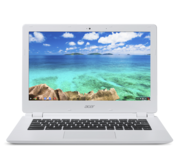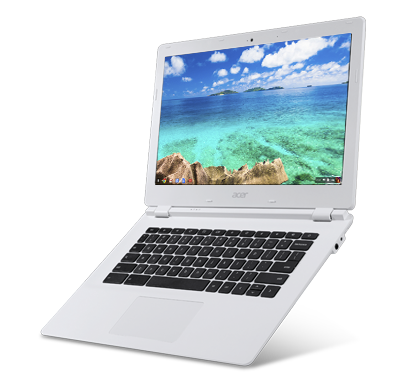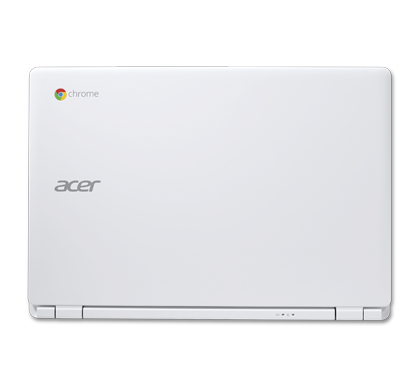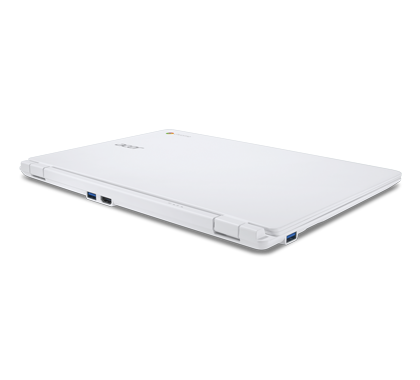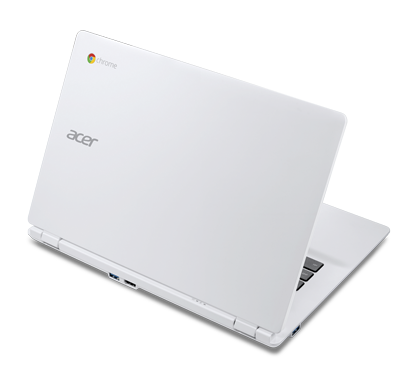Acer Chromebook 13 CB5-311-T0B2
Spécifications de l'ordinateur portable
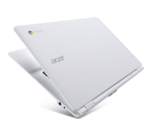
Price comparison
Moyenne de 6 notes (à partir de 8 critiques)
Critiques pour le/la Acer Chromebook 13 CB5-311-T0B2
Athlétique. Acer lance sur le marché un Chromebook de 13,3 pouces adoubé CB5-311. Un processeur ARM Tegra K1 tout droit venu des usines de Nvidia équipe l'appareil. Une machine qui mérite notre intérêt ?
Source: Tech Advisor
 EN→FR Archive.org version
EN→FR Archive.org versionAcer knows how to make good, solid, reliable Chromebooks, and this model is no exception. Performance was always decent, the screen size is a welcome addition, and the long battery life makes it a great option for travelling. It’s just a shame that the display panel doesn’t quite match up to that of the Toshiba Chromebook 2, which is similarly priced but does offer a richer experience. If you can accept the screen though, the Acer Chromebook 13 is a very nice machine that will get the job done.
Critique simple, disponibles en ligne, Très courte, Date: 03/19/2015
Notes: Note globale: 80% prix: 80% performances: 80% équipement: 80% finition: 80%
Source: PC Authority
 EN→FR Archive.org version
EN→FR Archive.org versionIn a market that is getting more and more cluttered by the day, Acer’s Chromebook 13 is a solid device with great performance that will suit the needs of most mobile users, provided the Chrome OS is to their liking or meets their needs.
Critique simple, disponibles en ligne, Très courte, Date: 02/23/2015
Notes: Note globale: 80%
Source: Computer Shopper
 EN→FR Archive.org version
EN→FR Archive.org versionBut should it be on every shopper's short list? Frankly, we opened the box expecting the Acer Chromebook 13—with its big 1080p screen and cutting-edge CPU/GPU—to set a new standard for affordable Chromebooks, and we're a little disappointed that it didn't. It's a solid contender, one we enjoyed keeping in our briefcase for days and using for hours at a time, but it loses points for its pale display and merely adequate benchmark performance.
Critique simple, disponibles en ligne, Longue, Date: 10/05/2014
Notes: Note globale: 70%
Source: Computerworld.com
 EN→FR Archive.org version
EN→FR Archive.org versionSo should you buy it? If you're set on a 13-in. Chromebook, the choice basically comes down to this or the $300 first-gen Toshiba Chromebook. The Haswell-based Toshiba has superior performance but worse build quality and a lower resolution (though similar in quality) display. Ultimately, each system has its own strengths and weaknesses; which is better is really just a question of which qualities matter more to you.
Critique simple, disponibles en ligne, Très courte, Date: 09/24/2014
Source: CNet
 EN→FR Archive.org version
EN→FR Archive.org versionThe Acer Chromebook 13 is the first Nvidia-powered Chrome OS device we've seen, but it won't be the last. HP and others have similar designs coming soon, and with the growth of popularity in Chromebooks overall, there's a chance this won't always be an Intel-dominated category.
Critique simple, disponibles en ligne, Longue, Date: 09/04/2014
Notes: Note globale: 80% performances: 90% mobilité: 80%
Source: Laptop Mag
 EN→FR Archive.org version
EN→FR Archive.org versionNvidia is looking to challenge Intel in the Chromebook market, and it's off to a solid start with the Acer Chromebook 13. While not as powerful as Core i3-powered Chromebooks, this $300 laptop benefits from a sharp 1080p display, a comfy keyboard and enough endurance to last the day. It's also wrapped in an attractive -- if smudge-prone -- chassis. That's a real bargain.
Critique simple, disponibles en ligne, Longue, Date: 09/04/2014
Notes: Note globale: 70%
Source: Slashgear
 EN→FR Archive.org version
EN→FR Archive.org versionThe Acer Chromebook 13 FHD is the finest Chromebook on the market today in its price range. The 720p "HD" version will cost you $279 while the 1080p "FHD" version we have here will run you a cool $299 USD. That’s certainly not half bad.
Critique simple, disponibles en ligne, Courte, Date: 09/04/2014
Source: Laptop.bg
 BU→FR Archive.org version
BU→FR Archive.org versionCritique simple, disponibles en ligne, Très longue, Date: 10/16/2014
Commentaire
NVIDIA GeForce ULP K1 (Tegra K1 Kepler GPU):
Puce graphique intégrée au SoC Tegra K1 SoC basée sur l'architecture Kepler. Intègre un seul bloc SMX de 192 unités de calcul prenant intégralement en charge les instructions OpenGL 4.4 (Tessllation comprise par exemple).
La plupart des jeux pas trop demandants actuels peuvent tourner de façon fluide. soyez prêts à endurer un rendu graphique assez moche à cause de la basse résolution et des détails au minimum. Par ailleurs ces cartes sont suffisantes pour un travail de bureau et le visionnage de vidéos (pas évident pour la vidéo HD).
>> Plus d'informations sont à trouver dans notre comparaison des cartes graphiques mobiles et ainsi que dans notre liste des Benchmarks affiliés.
K1:
System on a Chip (SoC) pour Smartphones et tablettes. Intègre un processeur Cortex-A15 4+1 ainsi qu'une carte graphique Kepler dotée de 192 unités de calcul CUDA.
>> Plus d'informations sont à trouver dans notre comparaison des processeurs mobiles.




